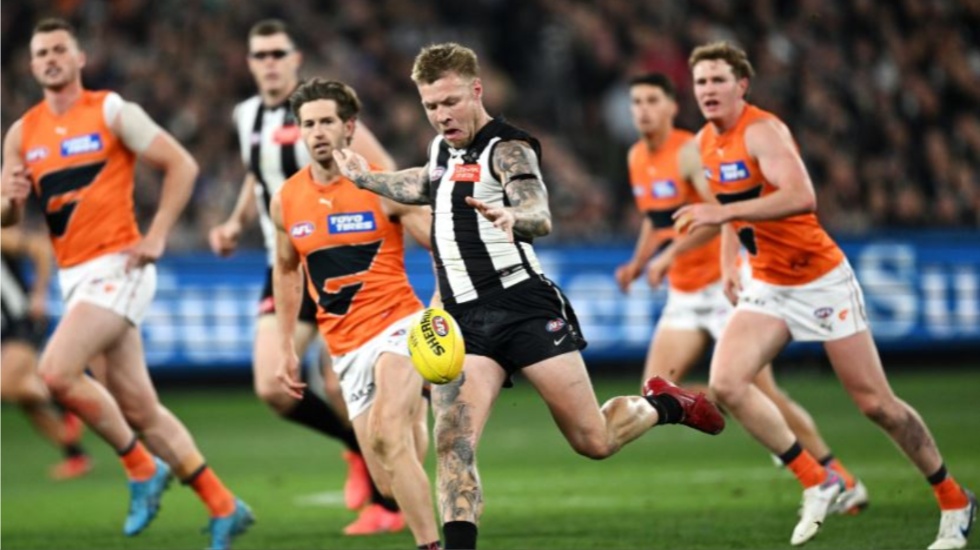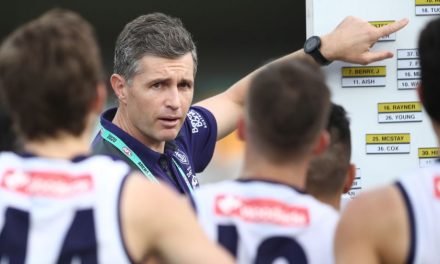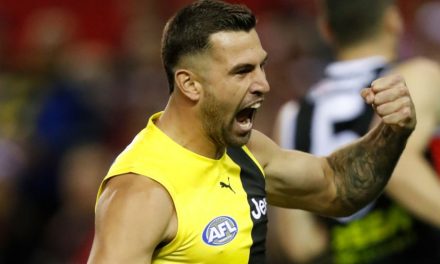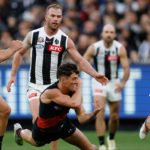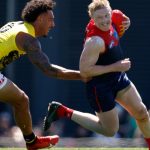Collingwood’s Jordan De Goey bursts clear in last year’s preliminary final against GWS. Photo: AFL MEDIA
The wait is over for AFL fans, with a new season kicking off over the next few days … well, sort of.
It all begins this year not with a traditional round one of nine matches, but just four games plucked from subsequent weeks to appeal specifically to the markets in Queensland and New South Wales, which will each host two games.
Traditionalists in the old VFL heartland of Melbourne may grumble a little, but you can understand the rationale. Particularly when you consider some of the yawning gaps off field between some clubs from the old football world and those representing the new.
Saturday night’s match-up between Greater Western Sydney and Collingwood at Giants Stadium is a perfect example.
Just one point separated these two teams when they last met in an epic preliminary final last September, and the Giants are widely perceived to be one of if not the biggest threat to the Magpies’ chances of winning back-to-back flags. There’s very little between them.
That’s anything but the case off the field, however, where Collingwood continues to cash in – literally – on its history and culture coupled with consistent results on the ground, while the Giants, even after 12 years in the AFL competition, are still trying to establish a foothold.
The AFL membership table tells its own story. Last year, the Magpies boasted the AFL’s biggest membership base of 106,470 on the “ladder”. GWS, meanwhile, was 17th, ahead of only Gold Coast, with a membership of 33,036.
The Giants have been consistently successful on the field for close to a decade now, but the sporting and social landscape has changed considerably since their formation and entry back in 2012.
The Covid pandemic significantly changed lifestyle priorities and social mores. There’s now a cost-of-living crisis biting deep. And there’s so many not only sporting but entertainment options available that more and more people are becoming increasingly picky about how they spend their time and money.
GWS coach Adam Kingsley made some very telling observations about his club’s status during an interview with AFL media this week.
“Western Sydney football – as I understand it – was strengthening pre-Covid, but as soon as Covid hit everything fell away, which has really hurt football in western Sydney. Participation levels are down on what they were and it is not really accelerating at the level anyone would hope for,” he said.
PLEASE HELP US CONTINUE TO THRIVE BY BECOMING AN OFFICIAL FOOTYOLOGY PATRON. JUST CLICK THIS LINK.
“I don’t know what comes first: do you turn the TV on and that then encourages kids and adults to participate? Or do you participate in the game and then once you start to play, you start to watch it on TV? I’m not sure what the sequence is. Maybe we can get another 10,000 a week. Why can’t we be like West Coast with a waiting list for membership on seating inside the stadium? The region is big enough to support it.”
West Coast, whose membership of more than 100,000 is second only to Collingwood’s, is going through the most abject few seasons of its history in terms of on-field performance, having won just five games in the past two years.
But in a football-mad state, with massive corporate and fan support, and with a history now of approaching 40 years in the elite football competition, most of which has been consistently successful, the Eagles will never been truly endangered.
The playing field is in stark contrast now for sporting “start-ups” even in traditionally friendly territory, as Tasmania may discover as it takes its first steps in AFL company, the new club set to launch in 2028.
A negotiation with Warner Brothers over use of the copyrighted “Devils” moniker is just a small potential hiccup compared to on-going local disquiet about the proposed new stadium in which the side will play. That’s all before the matter of actual team performance is considered.
And new AFL chief executive Andrew Dillon made it clear this week that the landscape won’t tolerate the same sort of patience which was shown Gold Coast and GWS in their formative seasons as they developed essentially junior playing lists.
The anxiety is understandable when you consider the example of some other Australian sporting competitions.
Rugby (as opposed to league) is in dire straits in this country. Soccer’s A-League was thriving a decade ago but now struggles for both patronage and media attention. Cricket’s Big Bash League isn’t nearly the sort of fashionable item it was five or so years ago.
Those clubs like Collingwood, which have built their support bases over so long a period and at a time when courting public support was less complicated, have enormous advantages over the likes of the Giants, which makes Saturday night’s clash between the two important on several levels.
And why the home club’s officials will be watching what happens in the lead-up, around the turnstiles and in the TV ratings, perhaps even more anxiously than what happens between the first and final sirens on Saturday evening.
This article first appeared in Australian Community Media publications.

